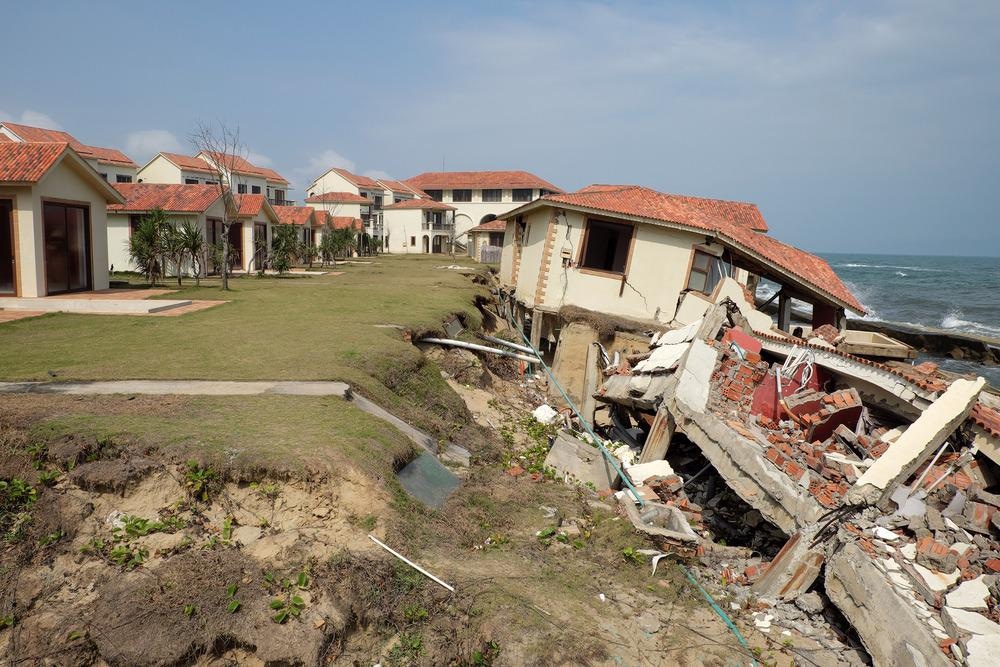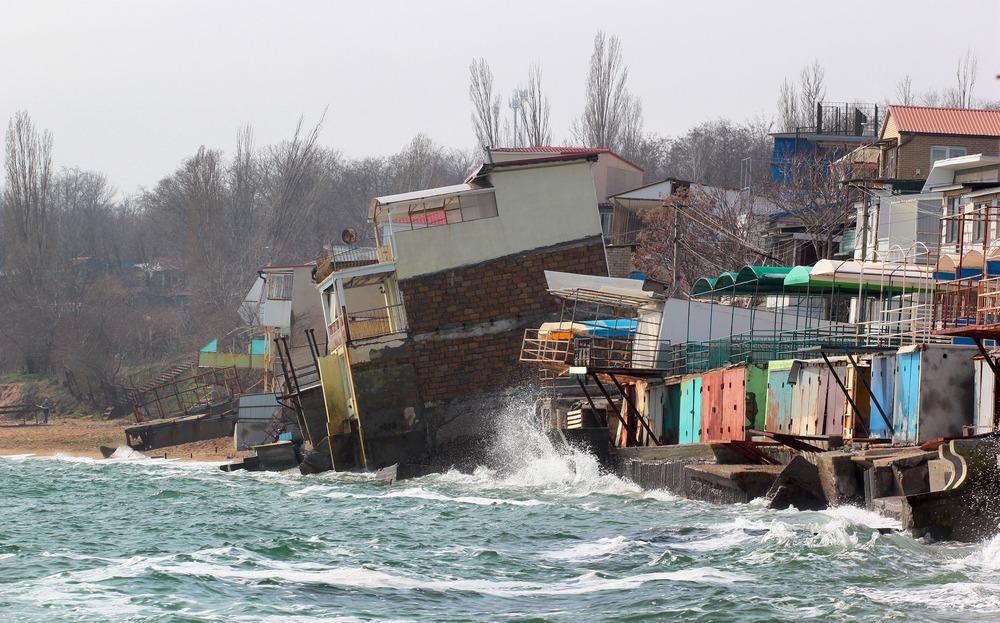The latest Intergovernmental Panel for Climate Change (IPCC) report makes stark warnings about rising sea levels, which cannot be avoided even in best-case scenarios for climate change mitigation. The threat of saltwater intrusion poses significant risks to coastal infrastructure worldwide, and investment must be made to avoid metal and concrete corrosion.

The IPCC is a United Nations body that possesses a mandate to report scientific research on human-induced climate change. Rather than conducting original research or monitoring climate change themselves, the IPCC undertakes a wide-ranging review of relevant scientific literature.
The result of these systematic reviews is the IPCC's regular Assessment Reports on climate change. These reports make up the most extensive peer review process in scientific history and are underwritten by the governments of all United Nations member states.
Rising Sea Levels: The Latest Data
According to the IPCC report, the global mean sea level has risen faster in the last century than it has in any other for at least 3,000 years. Between 1901 and 2018, the mean sea level around the world rose by 20 cm.
This rise is increasing. Between 1901 and 1971, the global mean sea level rose by an average of 1.3 mm each year and advanced to 1.9 mm between 1971 and 2006. In the last decade, sea level rise has been dramatic. Between 2006 and 2018, the average rise per year was a staggering 3.7 mm.
What Causes Rising Sea Levels?
Sea levels rise for three main reasons:
- Thermal expansion
- Melting glaciers
- Melting ice sheets
50% of this rise since 1971 was due to thermal expansion, which is the increasing volume of water in the ocean as it warms due to climate change.
Human influence was very likely the main driver of these increases since at least 1971.
Climate Change 2021: Physical Science Basis Summary for Policymakers, IPCC, 2021
Ice loss from melting glaciers at high altitudes is responsible for 22% of the recent sharp rise in sea levels. Melting ice sheets in polar regions contributed another 20%, as the rate of ice sheet loss was four times higher between 2010 and 2019 than it was between 1992 and 1999.
The remaining 8% of the blame for rising sea levels is attributed to changes in land water storage, as reported by the IPCC.

Image Credit: xuanhuongho/Shutterstock.com
Sea Level Rise and Coastal Infrastructure
The IPCC report demonstrates that human-induced warming is intensified near cities, resulting in increased precipitation in urban areas. For cities near the coast where the majority of the planet's population lives, the risks of urbanization to local climate change are exacerbated by rising sea levels.
The problem will be worse for some coastal communities than it will for others. The IPCC report highlights two-thirds of the world's coastline that will rise by 20% more than the mean global increase. Extreme sea-level events (floods) that once occurred every century will start to occur annually in over half of these locations by 2100.
The recent, tragic collapse of the Champlain Towers South condo building in Surfside, Miami, was caused by saltwater corrosion in the building's basement. Although rising sea levels have been ruled out as a direct source, the tragedy is already serving as a warning about the dangers of saltwater intrusion for property developers, homeowners, and local governments.
Metal rebar and concrete in the basement had been significantly corroded by saltwater intrusion, and a 2018 inspection report noted "abundant cracking and spalling in various degrees". "Spalling" describes concrete degradation with noticeable crumbling or cracks forming.
When saltwater incursion reaches structural concrete – as it did in Champlain Towers' basement – it seeps into the concrete, introducing chloride ions to the reinforcing steel rebar inside. This corrodes the metal and causes it to expand, causing the concrete to break from the inside out.
Shipbuilders and dock developers are able to prevent seawater corrosion. However, rising sea levels mean that buildings that were not designed with saltwater incursion in mind will become more at risk of corrosion if repairs are not made.
Responding to the risks of rising sea levels, Miami plans to spend $3.8 billion in coming years to build fortifications along its famous coastline in a bid to save the buildings and infrastructure from destruction.
These infrastructure challenges are not limited to buildings in South Florida, either. The local government near Seattle, Washington, has spent $1.8 million on repairs to wastewater treatment plants that have been damaged by saltwater corrosion. These were designed in the 1950s and 1960s, and some pump infrastructure was below the high tide line until the necessary renovations took place.

Image Credit: aquatarkus/Shutterstock.com
Rising Sea Levels for the Next Century
The IPCC reported with "virtual certainty" that the global mean sea level will keep rising for the rest of the 21st century and will be the case in any future emissions scenario, no matter how optimistic.
As ice sheets will continue to melt for hundreds of years, the IPCC reports that sea levels could keep rising for millennia. The higher mean sea levels will remain in place for thousands of years even after they stop. The IPCC does not foresee any reversal of the rise of sea levels for hundreds or thousands of years, even in a scenario with a significant reduction or elimination of net CO2 emissions.
Conclusion
The IPCC reports and recent disaster in South Florida provide a stark warning to developers, homeowners, and local governments. Coastal infrastructure must be refurbished, maintained, or even abandoned as saltwater intrusion makes structures unsafe.
Rather than commanding the tide to return, like King Canute, we need to listen to our experts and heed their warnings. Coastal infrastructure planning and maintenance must take the IPCC's latest forecasts on rising sea levels seriously, and plan accordingly.
--
Industrial Response to Climate Change
This article is a part of the IPCC Editorial Series: Industrial Response to Climate Change, a collection of content exploring how different sectors are responding to issues highlighted within the IPCC 2018 and 2021 reports. Here, Cleantech showcases the research institutions, industrial organizations, and innovative technologies driving adaptive solutions to mitigate climate change.
References and Further Reading
IPCC. (2018) Summary for Policymakers. Global Warming of 1.5°C. An IPCC Special Report on the impacts of global warming of 1.5°C above pre-industrial levels and related global greenhouse gas emission pathways, in the context of strengthening the global response to the threat of climate change, sustainable development, and efforts to eradicate poverty. Available at: https://www.ipcc.ch/
IPCC. (2021) Summary for Policymakers. Climate Change 2021: The Physical Science Basis. Contribution of Working Group I to the Sixth Assessment Report of the Intergovernmental Panel on Climate. Available at: https://www.ipcc.ch/report/ar6/wg1/downloads/report/IPCC_AR6_WGI_SPM.pdf
Ariza, Mario Alejandro. (2020) As Miami keeps building, rising seas deepen its social divide. Yale School of the Environment. [Online]. Available at: https://e360.yale.edu/features/as-miami-keeps-building-rising-seas-deepen-its-social-divide.
Parker, L. (2021) Miami condo collapse highlights urgent need to adapt to rising seas. National Geographic. [Online]. Available at: https://www.nationalgeographic.com/environment/article/miami-condo-collapse-highlights-urgent-need-to-adapt-to-rising-seas.
Pilkington, B. (2020) Rising Sea Levels and the Effect on the US Coastline. AZO Cleantech. [Online]. Available at: https://www.azocleantech.com/article.aspx?ArticleID=1082.
Weise, E., and Ruiz-Goiriena, R. (2021) As rising seas erode buildings, it's getting riskier to live on the coast. USA Today. [Online]. Available at: https://eu.usatoday.com/story/news/nation/2021/07/09/surfside-condo-collapse-climate-change-coastal-living/7876434002/.
Wilhelm, S. (2014) Earth Day issue: Rising sea levels threaten King County wastewater system. Biz Journals. [Online]. Available at: https://www.bizjournals.com/seattle/news/2014/04/22/earth-day-issue-rising-sea-levels-threaten-king.html.
Disclaimer: The views expressed here are those of the author expressed in their private capacity and do not necessarily represent the views of AZoM.com Limited T/A AZoNetwork the owner and operator of this website. This disclaimer forms part of the Terms and conditions of use of this website.